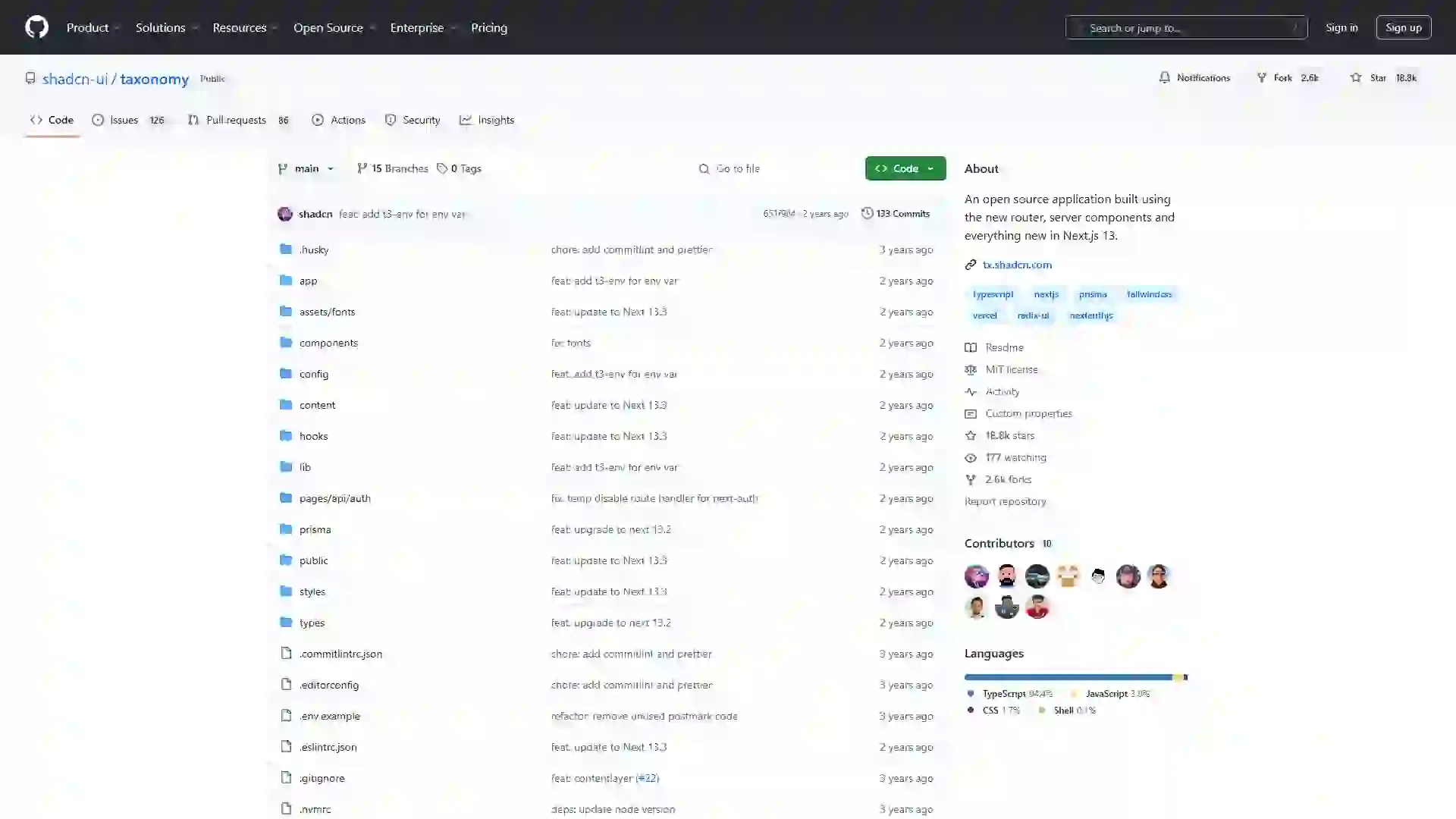- Home
- Development
- Taxonomy
Taxonomy
📝 Summary
Taxonomy is an innovative open-source web application experiment project, meticulously crafted on the cutting-edge Next.js 13 and React 18 frameworks. It is designed to explore the best practices and performance optimization techniques within modern front-end technology stacks, providing a sandbox for developers to push the boundaries of contemporary web development.
✨ Features
- Modern Technology Stack: Empowered by Next.js 13 and React 18, Taxonomy supports the latest front-end development features, including server components and concurrent rendering, ensuring a future-proof development environment.
- Open Source Collaboration: Fully open-source, Taxonomy invites developers to freely view and contribute to the codebase. This transparency not only fosters community engagement but also serves as a learning platform for the latest front-end technologies.
- Experimental and Exploratory: Primarily focused on experimentation and exploration, Taxonomy is an ideal playground for developers to learn and test new technologies, making it a perfect fit for those seeking to stay ahead in the rapidly evolving world of web development.
- Performance Optimization: Leveraging Next.js's advanced optimization features such as static generation and server-side rendering, Taxonomy enhances application performance, delivering faster load times and a seamless user experience.
🎯 Use Cases
- Front-End Learning: Taxonomy is an ideal tool for front-end developers looking to master the latest features of Next.js and React. It provides a hands-on environment for learning and practicing modern front-end development techniques.
- Technology Exploration: Designed to explore and test best practices and performance optimization strategies in modern front-end technology stacks, Taxonomy is a valuable resource for developers seeking to stay at the forefront of web development.
- Open Source Contribution: Developers can actively participate in the project by contributing code, thereby enhancing their skills and contributing to the broader development community.
⚠️ Drawbacks
- Experimental Nature: As an experimental project, Taxonomy is primarily intended for development and testing purposes. It may not be suitable for direct deployment in production environments.
- Insufficient Documentation: Given its experimental nature, the documentation may not be comprehensive. Beginners may require additional time to fully understand the project's intricacies.
- Limited Community Support: Compared to more established projects, Taxonomy's community support and resources may be limited. However, this also presents an opportunity for early contributors to shape the project's direction.
❓ FAQ
Q1: What are the main features or benefits of Taxonomy?
A1: Taxonomy offers a modern technology stack with Next.js 13 and React 18, providing cutting-edge features like server components and concurrent rendering. It is fully open-source, allowing for collaborative learning and development. Additionally, it focuses on performance optimization through static generation and server-side rendering, making it an ideal tool for both learning and experimentation.
Q2: Is Taxonomy suitable for beginners or professionals?
A2: Taxonomy is suitable for both beginners and professionals. Beginners can use it as a learning platform to understand modern front-end technologies, while professionals can leverage it for experimentation and testing of new features and optimization techniques.
Q3: Are there any limitations to be aware of?
A3: Yes, Taxonomy is primarily an experimental project. It may not be suitable for production use due to its focus on exploration. Additionally, its documentation may not be comprehensive, and community support is currently limited compared to more established projects.
